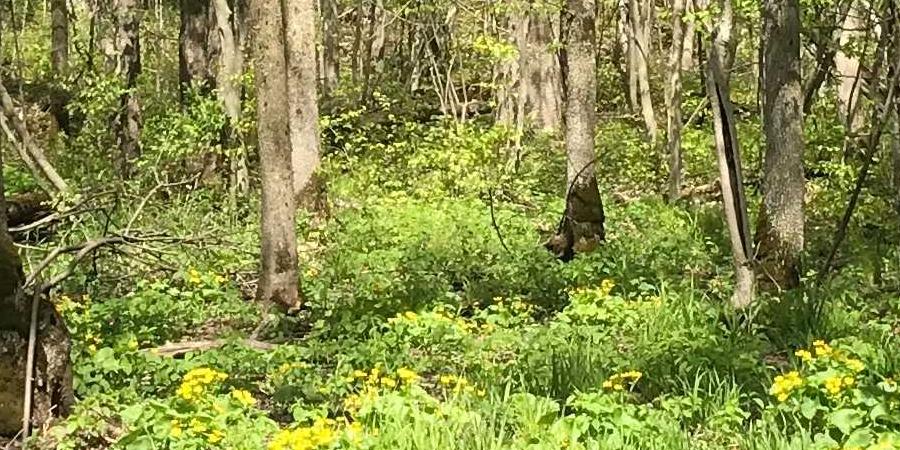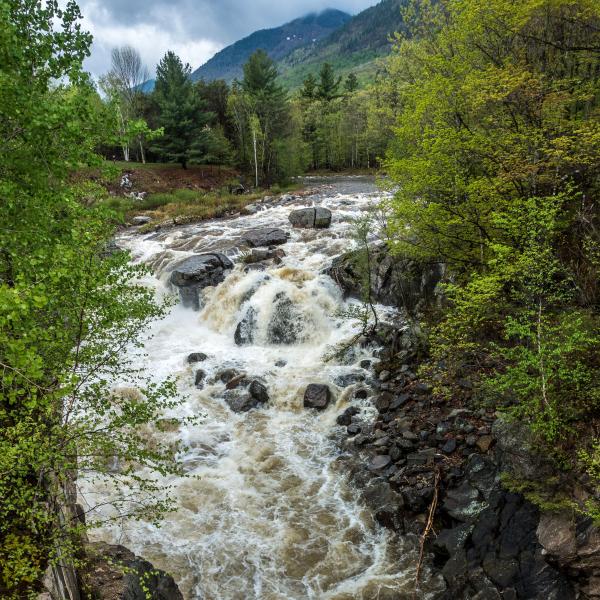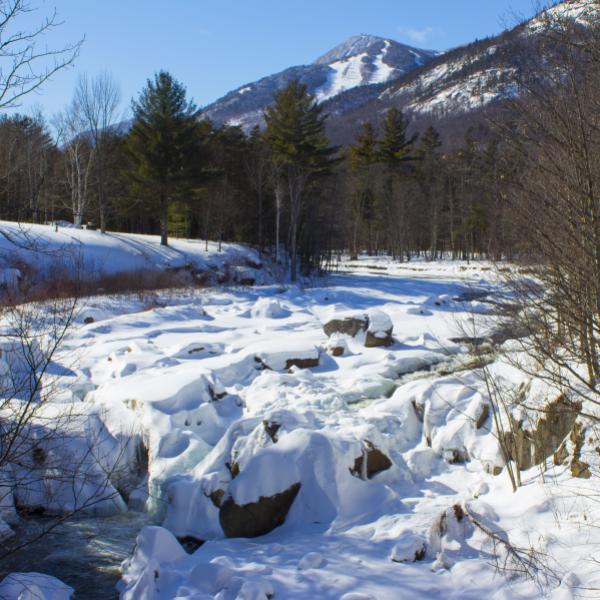Spring has sprung and it's one of the best times to get outside and find the early signs of wildflower season in the Ausable and Boquet watersheds. Wildflowers can be found in a variety of places: rich, moist areas, dry meadows, and mixed forests. This means you can find them on hikes and while you're out and about exploring the watershed.
My favorite wildflower book for the Adirondacks (and the northeastern U.S.) is "Wildflowers in the Field and Forest" by Steven Clemants and Carol Gracie. The book is novice friendly as it is all organized by color and has a useful key for finding what you need. At the same time, it goes into depth on parts of a flower, pollinator biology, species distribution, wildflower gardening, and photography. It is always in my backpack when I go out for a hike!
As with any encounter with wild things, it's important to look at and love these beautiful flowers but leave them for the next person to admire. Never pick a wildflower. Many are protected species in the state of New York. Here are some of my favorite wildflowers:
Yellow trout-lily: Plants 4-10". Solitary flowers that are elliptic or narrowly oval. Petals are recurved, often with spotted dark patches on the outside. They can be found in the spring in rich woods, bottomlands, and meadows. The leaf speckling resembles the speckles on a trout. The relationship between the fish and the flower goes a little bit deeper. Bloom time coincides with the slow solar warming of streams. This warming activity on a trout stream triggers the reproduction and hatching of insects and, in turn, trout rise up from the cold stream bottom to feed.

Round-leaved yellow violet: heart shaped leaves, low to the ground ¾-1½". Flowers are yellow and solitary on short stalks. Found in deep, rich woods. Round-leaved violet is dispersed by ants. Interestingly, the non-native invasive fire ant (Solenopsis invicta; which is spreading across the U.S.), collects seeds of round-leaved violet, but a large percentage of them are destroyed in the process, far more than if native ants were to collect them. Also, the non-native invasive ants are more likely to discard the seeds in sites unfavorable to germination.

Support our water quality monitoring efforts throughout the Ausable River Watershed. Give with confidence today!
Trilliums: There are 39 native trilliums in the U.S. and belong to the Liliaceae (lily) family. They are in the bunch flower family, and are woodland herbs with three leaves, that join to a single, 3-petaled flower. Trilliums do not have nectar.
White Trillium: Plants are 8-18". Leaves are oval, diamond shaped, or round. Petals turn pink with age. They're found in rich, moist woods and thickets and bloom in the spring. They need sun, part shade, shade and more acidic soils (pH<6.8). White trillium are pollinated by Hymenoptera insects, including honeybees, bumblebees, and wasps.

Red Trillium: Plants 8-24". Leaves are broad and diamond shaped. Flowers are maroon found in moist woods in spring. Red trillium are pollinated by flies and beetles. The petals of the flowers exude a rank odor that attracts them to pollinate the flower.

Painted Trillium: Plants are 8-20". Leaves are oval. Petals are white with red or violet inverted V-shaped marking. They can be found in the spring through the summer in moist or wet woods, stream banks, mountains, acidic soils. The painted trillium's color contrast of red/violet on white is designed to attract potential pollinators to visit the flowers, implying that there is nectar and pollen available for a hungry insect to eat. There is less information on the type of insects that reliably pollinate the painted trillium, but flies and ants have been noted.

These are just a few of the wildflowers throughout the Ausable Watershed. Next time you're out enjoying the warmer weather you will likely come across these beautiful plants.
Story written and photos by Leanna Thalmann, Water Quality Associate. Sign-up for our e-newsletter to get weekly updates on the latest stories from the Ausable River Association.





